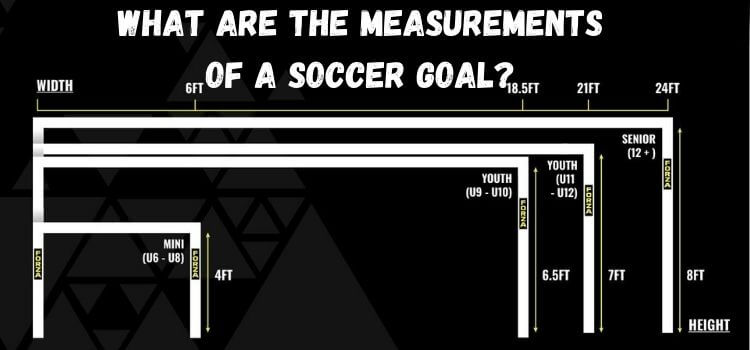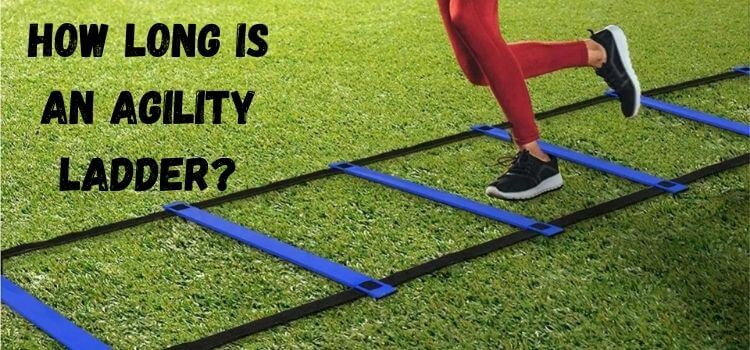As an Amazon Associate, I earn from qualifying purchases
One of the most popular games in the world, soccer is known for its profound excitement combined with its simplicity. At the heart of every soccer match lies the iconic symbol—the goal. But have you ever stopped to ponder the precise measurements of this essential element? In this comprehensive guide, we delve into the intricacies of soccer goal measurements, exploring their significance, regulations, variations, and impact on gameplay.

FIFA Regulations
FIFA, the international governing body of soccer, meticulously defines the regulations governing soccer goal measurements to ensure uniformity and fairness across all levels of play.
According to FIFA standards, a soccer goal must be positioned at the center of each goal line, have a height of 2.44 meters (8 feet), and be 7.32 meters (8 yards) wide.
Goal Dimensions
Full-Size Goals (11-a-side)
Full-size soccer goals, commonly used in professional matches and formal competitions, adhere strictly to FIFA regulations. These goals, towering at 8 feet in height and spanning 8 yards in width, serve as the ultimate target for players striving to secure victory for their team.
Smaller Goals for Youth and Recreational Play
In contrast, youth leagues and recreational soccer often utilize smaller goals to accommodate younger players and smaller playing areas.
These scaled-down versions maintain the same aspect ratio as their full-size counterparts but with reduced dimensions suitable for the age and skill level of the participants.
Goalposts and Crossbars
Soccer goalposts and crossbars, crucial components of the goal structure, are typically constructed from durable materials such as aluminum or steel. These robust elements withstand the impact of powerful shots while providing a clear target for scoring.
Goal Netting
Goal netting, draped behind the goal frame, serves as a visual indicator of successful scoring attempts and prevents the ball from rebounding too far away.
The mesh size and material must adhere to specific criteria, and the netting must be fastened firmly to the goal frame to guarantee fair play.
Variations in Goal Sizes
While FIFA sets the standard for soccer goal measurements, variations exist across different soccer organizations and levels of play.
Some leagues may adopt slightly different dimensions for their goals, although they generally align with FIFA regulations to maintain consistency and integrity in the sport.
Safety Considerations
Safety remains paramount in soccer, prompting organizations to implement stringent guidelines regarding goal dimensions and construction.
A goal’s capacity to stay upright and minimize injuries to players and spectators depends on its anchoring and stabilization mechanisms.
Impact on Gameplay
The dimensions of soccer goals profoundly influence the dynamics of gameplay, shaping strategies and tactics employed by teams.
A larger goal size may favor offensive play, encouraging teams to adopt an aggressive approach, while smaller goals often result in tighter defensive formations and strategic positioning.
Historical Evolution
The evolution of soccer goal measurements reflects the evolution of the sport itself, with historical records documenting gradual adjustments to goal dimensions over time.
From rudimentary wooden structures to sleek, modern designs, the journey of the soccer goal mirrors the evolution of soccer as a global phenomenon.
Custom Goal Sizes
In specific contexts, custom goal sizes may be utilized to accommodate specific needs or preferences. Whether for training purposes, recreational play, or specialized tournaments, custom-sized goals offer flexibility and versatility in catering to diverse soccer environments.
Goal Measurement Tools
Accurate measurement of soccer goals requires precision instruments designed for the task. Goal measurement tools, ranging from simple tape measures to advanced laser devices, enable officials and groundskeepers to verify compliance with established regulations.
Maintenance and Inspection
Regular maintenance and inspection of soccer goals are imperative to ensure their continued safety and compliance with regulations. Periodic checks for structural integrity, stability, and net attachment help mitigate risks and prolong the lifespan of goal equipment.
DIY Goal Construction
For enthusiasts seeking a hands-on approach, DIY (do-it-yourself) goal construction provides a rewarding opportunity to create customized soccer goals.
With readily available materials and basic carpentry skills, aspiring builders can craft durable and functional goals tailored to their specifications.
Environmental Factors
Environmental elements like wind, rain, and temperature changes can affect the stability and durability of soccer goals.
Proper site selection, anchoring methods, and maintenance practices are essential considerations for mitigating the effects of environmental variables.
Conclusion
In conclusion, the measurements of a soccer goal represent more than mere dimensions; they embody the essence of the beautiful game. From FIFA regulations to customized constructions, the diverse landscape of soccer goals reflects the rich tapestry of soccer culture worldwide. Coaches, players, and fans can all deepen their connection to their favorite sport by understanding and appreciating goal measurements.
FAQs (Frequently Asked Questions)
While FIFA establishes standard measurements for professional play, youth leagues often use smaller goals to accommodate younger players.
Soccer goals can be made of a variety of materials, including aluminum, steel, and PVC, depending on durability and portability.
Goal setting serves to indicate successful scoring attempts and prevents the ball from rebounding too far away, facilitating continuous gameplay.
Regular inspections of soccer goals, preferably before each use, are necessary to ensure their structural integrity and stability.
Recommendations generally advise employing ground anchors or counterweights to anchor soccer goals firmly.
Read Our More Articles
- Are Running Parachutes Effective? A Comprehensive Guide
- Does a Running Parachute Make You Faster? An In-Depth Look
- Are Women’s Soccer Goals Smaller? A Closer Look
- How Big is a 9v9 Soccer Goal? Get the Facts Here!
As an Amazon Associate, I earn from qualifying purchases


